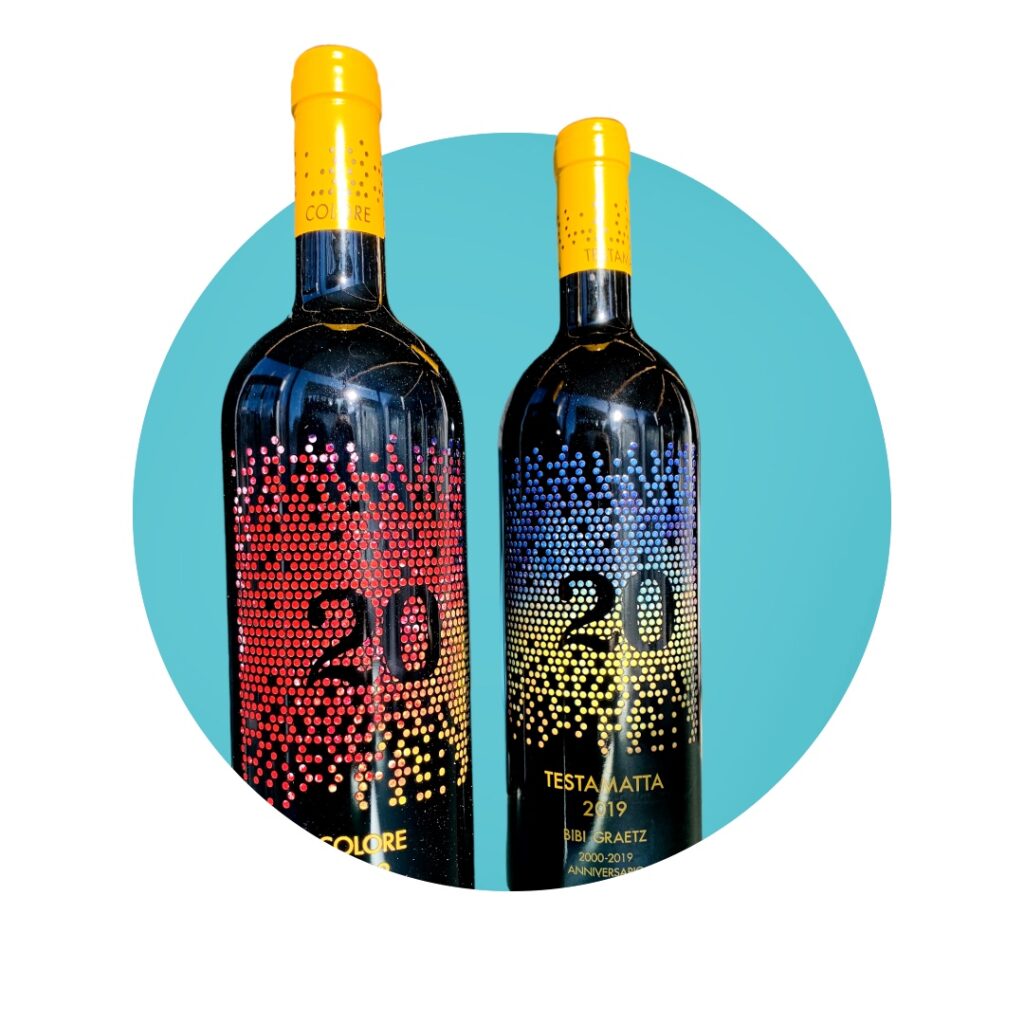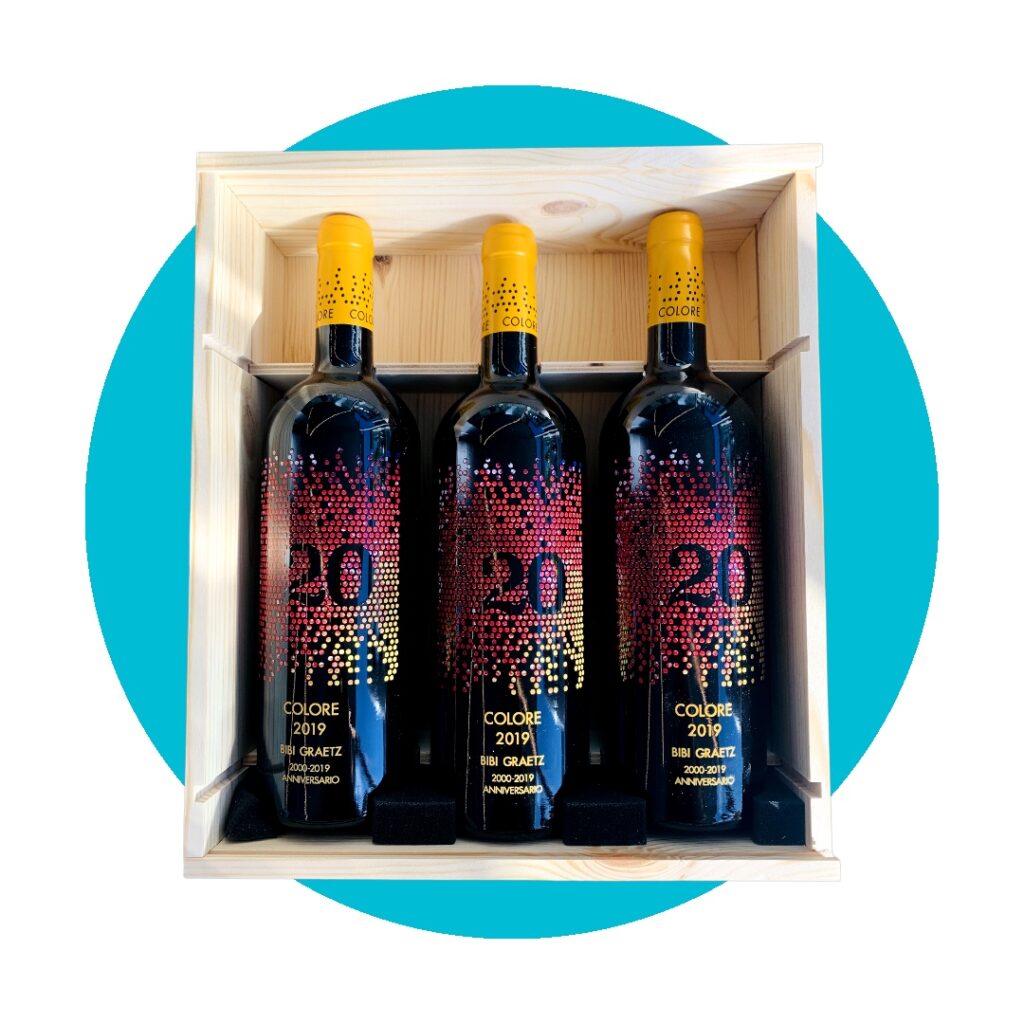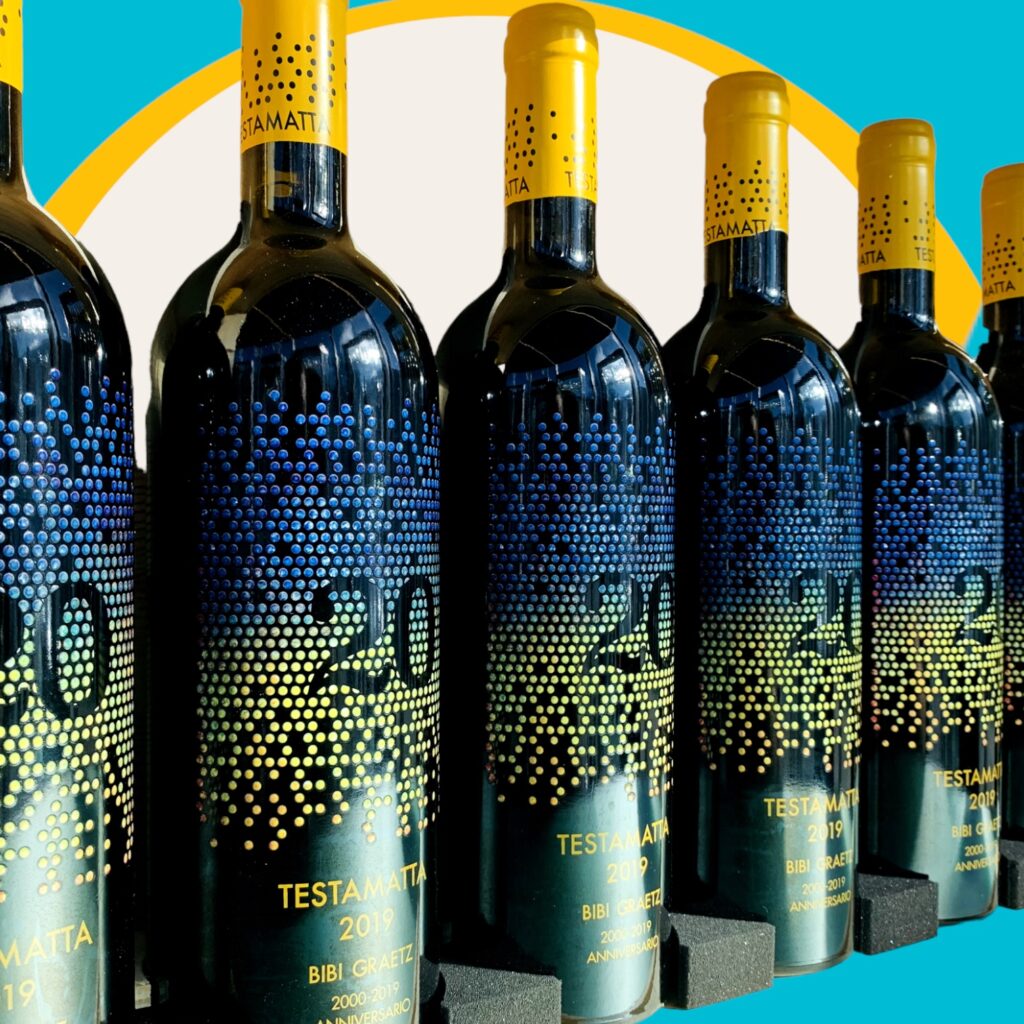Bibi Graetz – exceptional wine bottles for the 20th anniversary
Bibi Graetz – a beautiful wine story
Bibi Graetz started the wine business on his estate in the medieval Castello di Vincigliata, which was bequeathed to him by his parents. The building is located on the hill of Fiesole overlooking the city of Florence. The winemaker of the Testamatta winery has had no formal training in oenology, but has developed a passion for wine since his youth, when he was a student of painting. His first wines were made in the 2000s and his name was immediately associated with the great wines of Tuscany. His style stands out from the rest of the wine scene in the region and this is the trump card that brings him success. The small 2-hectare vineyard on the hills of Fiesole is in a terroir that is at the heart of traditional Chianti production. Bibi Graetz, however, breaks the rigid rules of Chianti to produce iconic wines.
In 2020, the activity was transferred to the centre of Fiesole, in the structure of the former Hotel Aurora, which now houses the family home, the offices, logistics, a tasting room, the barrel cellar and, naturally, the wine-making cellar. The vineyards, on the other hand, remain those of the Vincigliata estate, enriched over the years by other plots of land and vineyards belonging to other winemakers scattered throughout Tuscany, all with the same characteristic of being very old.
With his unique style of winemaking, his quest for excellence, his artisanal way of making wine and his artistic streak, Bibi Graetz is making his mark. His wines are regularly reviewed by influential critics such as Wine Spectator, Wine Advocate and James Suckling. This enthusiasm attracts the attention of collectors and lovers of rare wines, who regard every bottle in the cellar as a true collector’s item.
The exceptional wines of Bibi Graetz
Bibi Graetz uses grapes from Tuscan vineyards with old vines from all over the region. The red wines acquire depth and concentration and the white wines elegance. The winemaker puts typical Italian varieties at the heart of his wines. He uses only traditional varieties (Sangiovese, Colorino, Canaiolo) and indigenous varieties (Ansonica and Vermentino). By using ancient traditional grape varieties, he manages to achieve the essence and nuances that allow him to stand out from the classic production of the region and to highlight the authenticity of the terroir.
Special care is taken with the grapes. The vineyards around the chateau cover only 2 hectares, which are cultivated like a garden. The winemaker prefers very old vineyards, a natural viticulture. Between the search for other plots and the cooperation with other carefully selected winegrowers in the region, he reaches 50 hectares of vines.
Beyond the grape varieties, Bibi Graetz changes the codes of the DOC with innovative winemaking techniques. For his famous Testamatta, he ferments his red wines in small open vats. Six to eight manual pumping-over operations are necessary to achieve the final result.
20 years of Colore and Testamatta and an exceptional bottle of wine
Each wine from the cellar is a true work of art expressing the talented character of Bibi Graetz. The owner decorates each of his vintages with his own painting. The result: iconic vintages and labels that leave a lasting impression. Bibi Graetz goes to great lengths to make tasting his wines an unforgettable experience.
For the 20th anniversary, Bibi Graetz has invented something very special. This year, no labels will be glued onto the bottles, but the painting will be printed directly onto the wine bottle.
“For the 20th birthday, we decided to create a special bottle. It’s as if the bottles had dressed up for the occasion,” Bibi Graetz explains on her Instagram profile. She goes on to say that care was taken to maintain the identity of Testamatta and Colore and to create something very precious. “The idea was to recreate the effect of morning dew on the wine bottle,” Bibi Graetz continues. To achieve this, they decided to make a digital print directly on the bottle: “On the wine bottle there is no label, the colour is on the glass, this is unique and it is the first time you will see a wine bottle like this, it is really something very special”.
Personalised Testamatta and Colore wine bottles
- Testamatta personalised wine bottle 75cl
- Personalised wine bottle Colore 75cl
- Testamatta personalised wine bottle 1.5L
- Personalised wine bottle Colore 1.5L
A work of art on a bottle of wine – digital printing makes it possible
Bibi Graetz has shown the way: printing a work of art on a bottle of wine is now possible thanks to state-of-the-art technology. The digital printing process makes it possible to print an unlimited number of colours directly onto the glass bottle. This gives the packaging that extra something and makes the packaging design extraordinary. Creative and innovative packaging design is crucial to the success of a wine. The packaging of a wine is the first thing a customer sees, even before tasting the product. If the packaging design is appealing, the customer is curious and wants to taste the product at all costs.
A personalised bottle of wine and customer reactions
As part of a scientific study, the question was asked what reactions a personalised bottle of wine triggers in consumers. The study, published in 2019, clearly shows that a bottle of wine with a silkscreen or digital print can change the customer’s perception. According to this study, the use of these customisation methods not only gives the product a modern look, but also conveys the message to the customer that it is an exceptional product. It was particularly interesting that the study subjects stated that the product was perceived more authentically than those with a simple label.
The authenticity factor plays a very important role today, because from a marketing point of view, the authenticity of a brand or product also means that it is an honest company.


